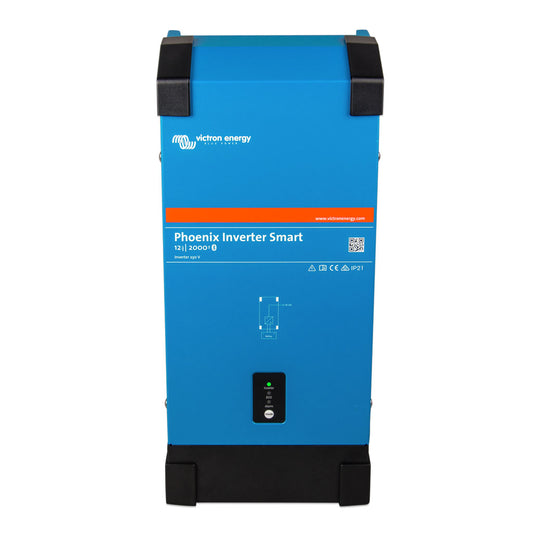Collection: Inverters: Pure sine wave, high peak power, high efficiency.
Inverters: with pure sine wave
An inverter converts the direct current battery voltage into a 230 volt alternating current voltage. With this 230 volts you can power conventional equipment as if you were at home. There are two types of inverters, the so-called square wave inverter. This type of inverter does not produce a pure sine wave, but a square wave, which causes many types of inverter interference. The other type of inverter is the pure sine wave inverter. This inverter produces a pure sine wave (similar to your socket at home) to power your equipment. This type of inverter is more expensive than the square wave inverter, but you can be sure that all your equipment will work on it without any problems.
Which wattage inverter
Which wattage inverter you need depends on two things. What do you want to connect to it and what kind of battery do you have? Let's start with the battery. If you have a conventional battery such as AGM, GEL or Semi-traction, you do not want to burden this battery more than 0.3x its own capacity due to shortening its lifespan. That means a 110Ah battery * 0.3 = 33A. When we multiply the 33 amps by multiplying the voltage of the battery to 12 volts, we arrive at 33A * 12V = 396 Watts. The advice here is to choose an inverter that is not heavier than 400 Watts. Now that we know that 400 Watts is the maximum we can connect to the battery, it is important to see what we want to connect to the pure sine wave inverter and what can be turned on at the same time. For example, your laptop charger and the battery charger of your bicycle can be on at the same time. The laptop charger is 40 Watts and the battery charger of your bicycle is 200 Watts. The inverter must therefore be able to supply a total of 40 Watts + 200 Watts = 240 Watts. Here we can choose a 250 watt inverter or a 375 watt inverter. Even if your battery has much more capacity, it is not advisable to connect the largest suitable inverter. This is because the inverter itself is also a consumer of energy, even if you have not connected anything to it. The rule is the larger the inverter, the more self-use. We recommend that you turn off the inverter using the switch when you have not used it, so that the self-consumption goes all the way to 0.
To make it easy for you, we have created a table in which you can easily see which inverter suits your battery. On the left you see the power of the inverter and then you can use the table to find out what minimum ampere hours (Ah) you need, depending on which type of battery you have. For example, an 800 watt inverter needs at least 150Ah of AGM battery. You can also read the table the other way around. Suppose you have a 150Ah semi-traction battery, then you can use an inverter of 500 Watts or less.

-
Inverter 250W 12/230V Phoenix Victron Energy
5 reviewsRegular price From €109,95Regular priceUnit price / per -
Inverter 375W 12/230V Phoenix Victron Energy
5 reviewsRegular price From €139,95Regular priceUnit price / per -
Inverter 500W 12/230V Phoenix Victron Energy
5 reviewsRegular price From €179,95Regular priceUnit price / per -
Inverter 800W 12/230V Phoenix Victron Energy
5 reviewsRegular price From €289,95Regular priceUnit price / per -
Inverter 1200W 12/230V Phoenix Victron Energy
5 reviewsRegular price From €379,95Regular priceUnit price / per -
 Sale
SaleInverter 2000W 12/230V Phoenix Victron Energy
5 reviewsRegular price €744,95Regular priceUnit price / per€819,95Sale price €744,95Sale






